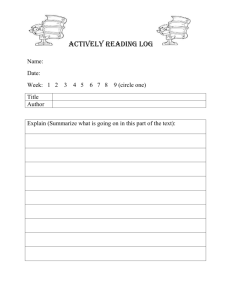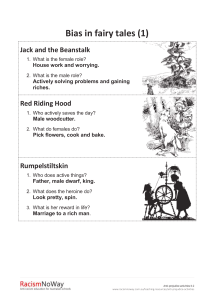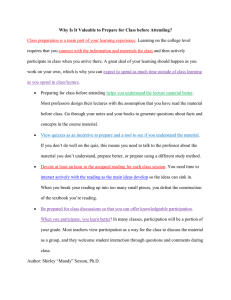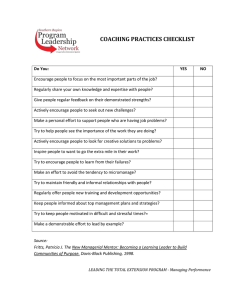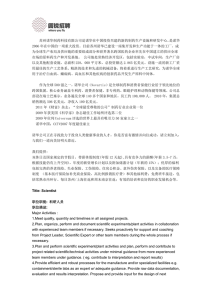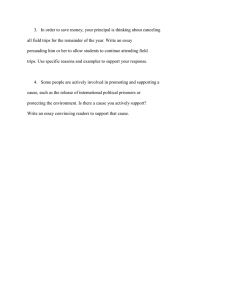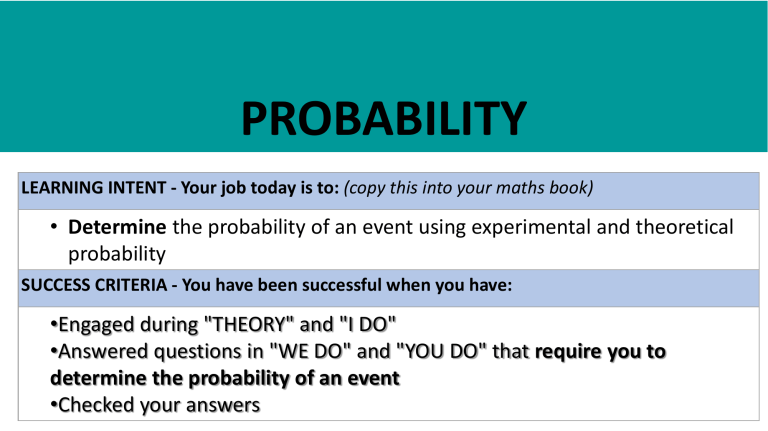
PROBABILITY
LEARNING INTENT - Your job today is to: (copy this into your maths book)
• Determine the probability of an event using experimental and theoretical
probability
SUCCESS CRITERIA - You have been successful when you have:
•Engaged during "THEORY" and "I DO"
•Answered questions in "WE DO" and "YOU DO" that require you to
determine the probability of an event
•Checked your answers
THEORY
Your job is to actively listen and watch.
What is probability?
• Probability measures the chance of an event taking place and
ranges from zero (0) for an impossible event to one (1) for a
certain event.
THEORY
Your job is to actively listen and watch.
DISCUSS: examples of probability of certain events occurring.
Eg/ What is the probability of you wearing a school uniform today?
What is the probability of it snowing in Cairns this evening?
THEORY
Your job is to actively listen and watch.
Experimental probability
• The experimental probability of an event is based on the outcomes
of experiments, simulations or surveys.
• A trial is a single experiment.
• The relative frequency of an event is the same as the experimental
probability of that event.
𝑛𝑢𝑚𝑏𝑒𝑟 𝑜𝑓 𝑠𝑢𝑐𝑐𝑒𝑠𝑠𝑓𝑢𝑙 𝑡𝑟𝑖𝑎𝑙𝑠
𝑅𝑒𝑙𝑎𝑡𝑖𝑣𝑒 𝑓𝑟𝑒𝑞𝑢𝑒𝑛𝑐𝑦 =
𝑡𝑜𝑡𝑎𝑙 𝑛𝑢𝑚𝑏𝑒𝑟 𝑜𝑓 𝑡𝑟𝑖𝑎𝑙𝑠
I DO
Your job is to actively listen and watch.
I DO
Your job is to actively listen and watch.
Event space or sample space:
list of all possible outcomes of
an experiment written using set
notation
eg. Event space = { }
I DO
Your job is to actively listen and watch.
I DO
Your job is to actively listen and watch.
Substitute values into
relative frequency
formula.
I DO
Your job is to actively listen and watch.
Substitute values into
relative frequency
formula.
I DO
Your job is to actively listen and watch.
Substitute values into
relative frequency
formula.
For segment I, there
were 5 successful trials
out of the 20.
I DO
Your job is to actively listen and watch.
Substitute values into
relative frequency
formula.
Repeat calculations for
all the segments.
I DO
Your job is to actively listen and watch.
Compare the
relative frequency
values you
calculated with the
known value of ¼ to
answers the
question.
I DO
Your job is to actively listen and watch.
Do any of these
match the known
probability?
Compare the
relative frequency
values you
calculated with the
known value of ¼ to
answers the
question.
I DO
Your job is to actively listen and watch.
Do any of these
match the known
probability?
How could you
change
experiment to
give better
results?
Compare the
relative frequency
values you
calculated with the
known value of ¼ to
answers the
question.
I DO
Your job is to actively listen and watch.
Do any of these
match the known
probability?
How could you
change
experiment to
give better
results?
Compare the
relative frequency
values you
calculated with the
known value of ¼ to
answers the
question.
WE DO
Ex 11.2 pg. 452 Q:2
Your job is to actively participate.
WE DO
Ex 11.2 pg. 452 Q:2
Your job is to actively participate.
YOU DO
job is to answer the questions
Ex 11.2 pg. 453 Q:3 Have a go at Your
this question.
The YOUR ANSWERS!
and CHECK
answer will be on the next slide.
YOU DO
Ex 11.2 pg. 453 Q:3
Your job is to answer the questions
and CHECK YOUR ANSWERS!
THEORY
Your job is to actively listen and watch.
Theoretical probability
• Theoretical probability is the probability of an event occurring, based on
the number of possible favourable outcomes, n(E), and the total number
of possible outcomes, n(ξ).
• When all outcomes are equally likely, the theoretical probability of an
event can be calculated using the formula:
where n(E) is the number of favourable events and n(ξ) is the total
number of possible outcomes.
I DO
Your job is to actively listen and watch.
I DO
Your job is to actively listen and watch.
Write down:
• number of favourable
outcomes n(E)
• total number of possible
outcomes n(ξ).
I DO
Your job is to actively listen and watch.
Write down:
• number of favourable
outcomes n(E)
• total number of possible
outcomes n(ξ).
I DO
Your job is to actively listen and watch.
Substitute these values into
the P(event) formula.
Where the event is rolling a
4.
I DO
Your job is to actively listen and watch.
Substitute these values into
the P(event) formula.
Where the event is rolling a
4.
I DO
Your job is to actively listen and watch.
Substitute these values into
the P(event) formula.
Where the event is rolling a
4.
Write the answer into a sentence.
WE DO
Ex 11.2 pg. 453 Q:7
Your job is to actively participate.
Write down:
• number of favourable
outcomes n(E)
• total number of possible
outcomes n(ξ).
𝑛 𝐸 =4
𝑛 𝜉 =6
4
𝑛 even number or a 5 =
6
2
=
3
Substitute these values into
the P(event) formula and
simplify.
The probability that an even number or a 5 is
2
uppermost when a fair die is rolled is .
3
Write the answer into a
sentence.
YOU DO
Your job is to answer the questions
and CHECK YOUR ANSWERS!
YOU DO
Your job is to answer the questions
and CHECK YOUR ANSWERS!
1
2
a) 20
d) 5
b) 20
e) 10
c)
f)
19
3
5
1
a) 5
2
b) 5
3
c) 10
1
9
10
3
d) 10
1
e) 5
2
f) 5
CLOSE
- Was I successful? Do I need help?
• Reflect back on the LEARNING INTENT and SUCCESS CRITERIA.
• Can I determine the probability of an event?
• If you need help with any of the content or questions in this lesson
try the strategies below:
Revisit the resources in this lesson and your notes/textbook and try again.
Ask me!! (outside of class time, via email, next lesson…..so many options!)
